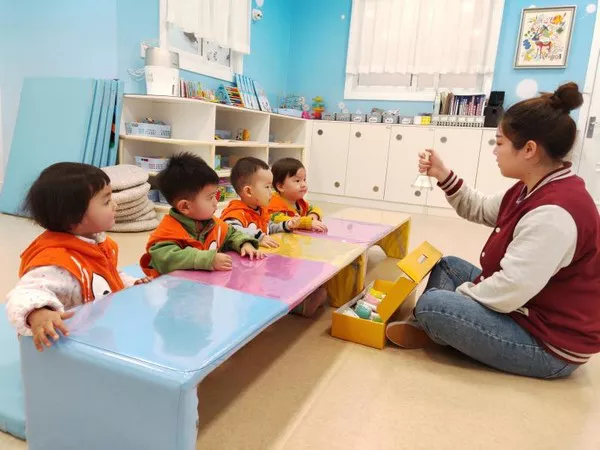The Myers-Briggs Type Indicator (MBTI) is a widely-used personality assessment tool based on the theory of psychological types proposed by Carl Jung. It categorizes individuals into one of 16 personality types based on their preferences in four dichotomies: extraversion/introversion, sensing/intuition, thinking/feeling, and judging/perceiving. While the MBTI is often used to gain insights into an individual’s personality and behavior, one question that frequently arises is whether personality types change with age. Understanding the dynamics of how MBTI may change over time can provide valuable insights into the complexities of human development and the fluid nature of personality.
The Stability of Personality Traits
One of the foundational assumptions of personality psychology is the stability of personality traits over time. According to this perspective, individuals tend to exhibit consistent patterns of behavior, thoughts, and emotions across various situations and contexts, which are thought to be relatively stable over the lifespan. However, research suggests that while certain aspects of personality remain relatively stable over time, other aspects may exhibit variability or change in response to life experiences, environmental influences, and developmental processes.
Developmental Changes in Personality
Studies examining the stability of personality traits over the lifespan have yielded mixed findings, with some research suggesting that personality traits tend to stabilize in early adulthood, while others suggest that certain aspects of personality may continue to change or evolve throughout life. For example, longitudinal studies have found evidence of increases in traits such as conscientiousness and emotional stability with age, while other traits may exhibit more variability or remain relatively stable over time. These findings highlight the complex interplay between genetic predispositions, environmental factors, and life experiences in shaping personality development.
The Influence of Life Experiences
Life experiences play a significant role in shaping personality development and may contribute to changes in MBTI preferences over time. For example, individuals may undergo significant life transitions, such as starting a new job, entering into a committed relationship, or becoming a parent, which can impact their values, priorities, and behaviors. These life experiences may lead individuals to reassess their preferences and adapt their behavior in response to changing circumstances, potentially resulting in shifts in MBTI type over time.
Cultural and Environmental Factors
Cultural and environmental factors also play a crucial role in shaping personality development and may influence MBTI preferences over time. Cultural norms, societal expectations, and familial influences can shape individuals’ values, beliefs, and behaviors, influencing their expression of MBTI preferences. For example, individuals raised in collectivist cultures may place greater emphasis on social harmony and cooperation, while those raised in individualistic cultures may prioritize autonomy and self-expression. These cultural influences can shape individuals’ preferences in the MBTI dichotomies and may contribute to changes in personality type over time.
Psychological Maturity and Self-Discovery
As individuals mature psychologically and engage in self-discovery, they may develop a deeper understanding of their own preferences, strengths, and weaknesses, leading to changes in MBTI type over time. Through introspection, self-reflection, and personal growth, individuals may gain insight into their values, motivations, and aspirations, which can influence their expression of MBTI preferences. Additionally, as individuals navigate the complexities of interpersonal relationships, they may learn to adapt their communication styles and behaviors to better align with the needs and preferences of others, potentially leading to shifts in MBTI type over time.
Cognitive Flexibility and Adaptability
Cognitive flexibility and adaptability are essential traits that allow individuals to navigate the challenges and uncertainties of life effectively. As individuals encounter new experiences, learn new skills, and confront novel situations, they may develop greater flexibility in their thinking and behavior, enabling them to adapt to changing circumstances and environments. This cognitive flexibility may lead to shifts in MBTI preferences over time as individuals learn to approach situations from different perspectives and integrate new information into their decision-making processes.
The Role of Personality Assessment
While the MBTI is a valuable tool for gaining insights into an individual’s personality preferences, it is important to recognize its limitations in capturing the complexities and nuances of human personality. Personality is multifaceted and dynamic, influenced by a wide range of factors that may not be fully captured by a single assessment tool. Additionally, individuals may exhibit variability in their expression of MBTI preferences depending on the context, situation, and stage of life. Therefore, while the MBTI can provide a useful framework for understanding personality, it should be interpreted with caution and supplemented with other measures of personality and behavior.
Conclusion
In conclusion, the question of whether MBTI preferences change with age is a complex and nuanced one, with no simple answer. While certain aspects of personality may exhibit stability over time, others may change or evolve in response to life experiences, environmental influences, and developmental processes. Factors such as life experiences, cultural norms, psychological maturity, and cognitive flexibility can all contribute to shifts in MBTI preferences over the lifespan. As our understanding of personality continues to evolve, it is essential to approach the study of personality development with openness, curiosity, and a recognition of the fluid and dynamic nature of human personality.
Related topics:




























